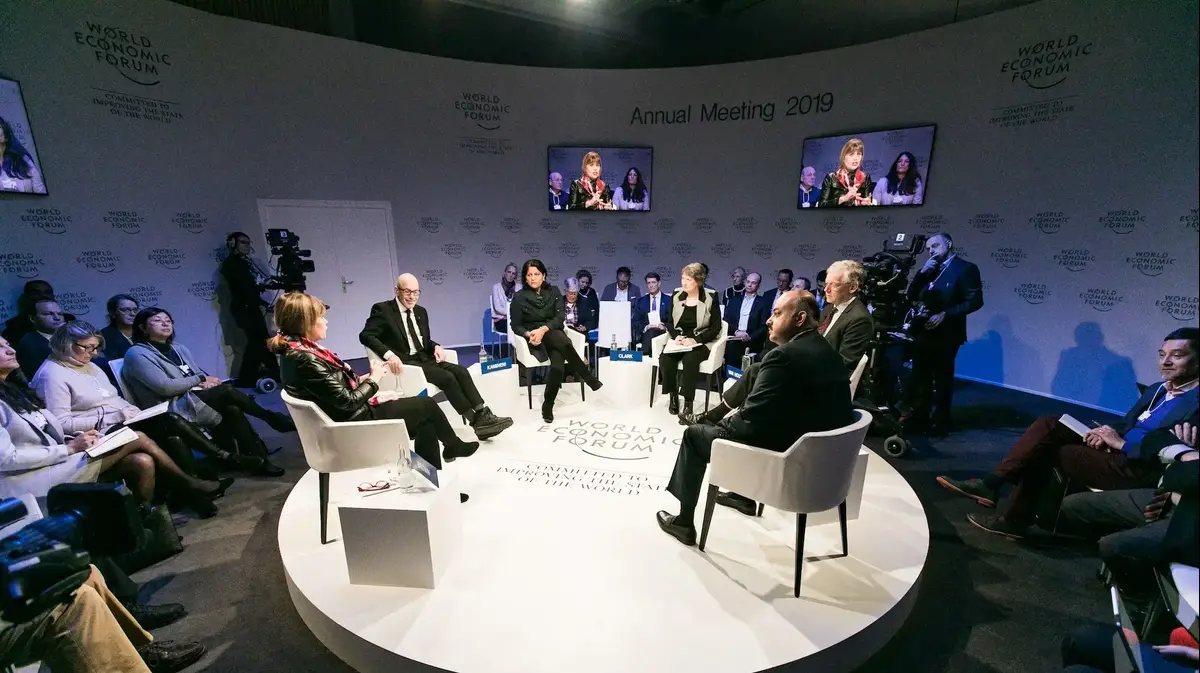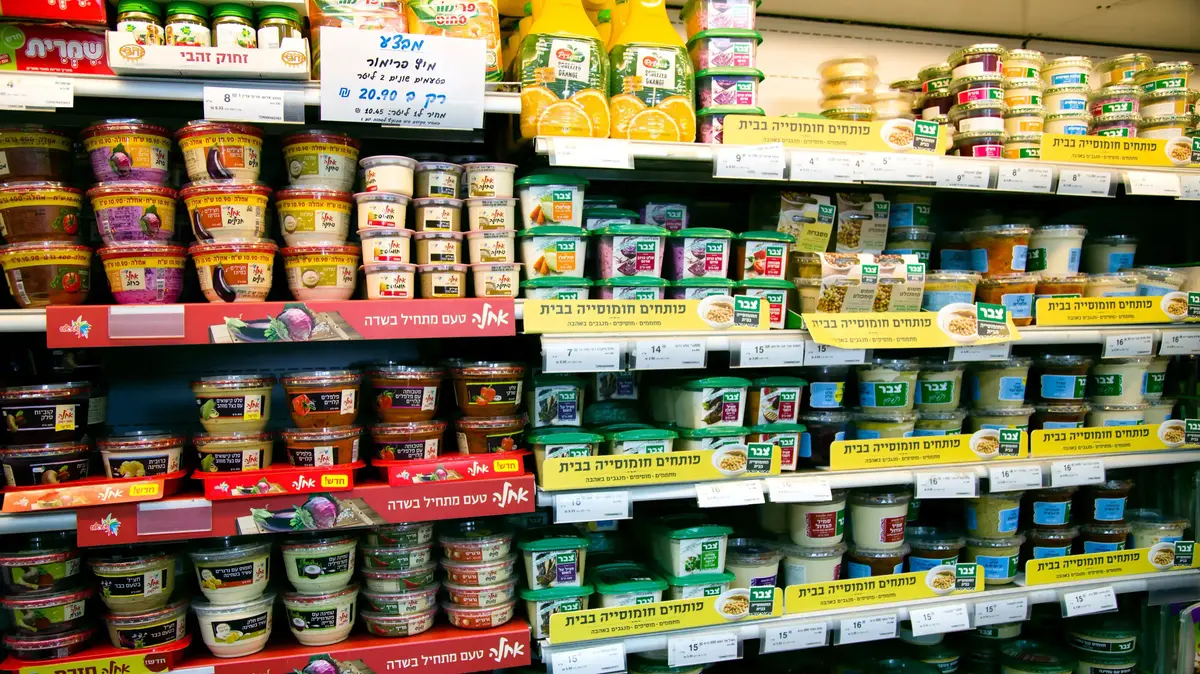A hybrid event of the World Economic Forum. (Photo: Unsplash)
As marketers at the peak of the Corona virus, we faced a host of postponements and cancellations of events every week, and we had to find the perfect formula for the virtual event that would be a suitable alternative to the events we had known until then.
Three years later, there is no shortage of tips and tricks or technology platforms, and many participants show a willingness to participate in online events, but the question of effectiveness remains unanswered.
With the return of face-to-face events, companies and brands are required to reconsider their event strategy, once again.
So what is better: frontal, hybrid or virtual?
The appearance of the virtual events
Amanda Levine. (Photo: Tufin)
The rise of virtual events during the epidemic was due to the fact that these allow attracting a large audience without placing geographical or economic barriers.
I remember the first major cyber security event held online and Tufin participated in it.
Without the need for a booth or travel expenses, we were able to lower the costs to 1/3 of the original budget, and also increase the amount of leads up to 10 times what we expected.
We felt that we had come up with a winning concept.
But, very quickly we realized that the quality of a virtual lead is different from that of a frontal lead.
Most of the leads were not born from direct contact during the event, so it took longer to convert them into sales opportunities.
Technically, we used 6Connex to move our annual customer conference into a virtual format.
This platform allowed us to create a personalized environment that simulates the personal experience at a frontal event, including a central stage for speakers, exhibitor booths, gamification, and an information and help booth.
In our webinars, we used Zoom's breakout room, with the aim of dividing the audience into intimate groups that would be selected for discussion.
We ran polls, used incentives and activated live chat to keep the audience engaged throughout the event.
Lead volumes were high, and tactics to foster interaction with participants were numerous.
So, can the frontal events be declared obsolete and irrelevant?
not exactly.
The irreplaceable value of physical events
In face-to-face events, an essential part of the participants' experience is networking, an experience that is difficult to reproduce in a virtual event.
Although it is possible to bridge the lack of involvement in virtual events through live chats and social networks, even these still do not allow reaching the level of connection reached in a personal meeting.
Face-to-face events may be expensive, require in-depth planning and be more exposed to external influences such as epidemics, weather conditions, demonstrations, etc., but they enable the forging of strong relationships between potential customers and company representatives.
With the new situation created, marketers began looking for a way to enjoy the ability of face-to-face meetings to generate networking in a way that has no competition, and at the same time the global distribution that the virtual conferences allow.
Are hybrid events a win-win?
As in hybrid work, the hybrid events were born from the same desire to enjoy the advantages of both formats, face-to-face and virtual.
Some organizations express the hybridity by having the first day face-to-face and the second virtual;
Other organizations use a 'hybrid hub' approach, an approach that connects people who arrived physically and those who connected virtually remotely, in real time.
Both groups come together but each of them enjoys a different experience.
The desire to produce an event that rewards both the participants who came physically and those who came online, to an equal extent, brings with it challenges.
We will have to treat the virtual and physical components of the hybrid event as productions in themselves, and in fact, this means the production of two separate events.
Not only does this have implications for the budget and resources, it is also not an easy task to meet the unique needs of two different audiences.
The risk inherent in trying to speak to both audiences and in the end not pleasing either of them, can reduce the level of effectiveness of the entire event to zero.
As the profit can be high so can the potential to miss the target and therefore hybrid events cannot be the only solution.
Adjust the format of the event to the stage you are in the marketing funnel
Marketers today need to use each of the formats, and adapt it to the stage they are in the marketing funnel.
For example, use virtual events to attract leads from the top of the funnel, those who are looking to research and learn, and with the right attitude can develop into a future sale.
Conversely, if the goal is to reach bottom-of-the-funnel leads, there's nothing like a front-end event run by strong salespeople who can make real connections and drive deals quickly.
Hybrid events require strategic thinking and are suitable for situations where we seem to attract a frontal audience as well as our virtual customer base.
on the importance of follow-up (follow-up)
Regardless of the format, once the event is complete, a pull-up is immediately started to start "moving things" along the funnel.
We work closely with the sales and business development people to make sure warm leads are converted to sales opportunities, make sure lukewarm leads get a push to action, and make sure we keep in touch with cold leads.
Tracking the leads along the funnel will allow you to evaluate the effectiveness of the event.
More specifically, there are two metrics you'll want to measure: one is the amount of new pipelines created, and the other is the acceleration of existing pipelines that have matured into advanced stage sales opportunities.
These methods must be analyzed against the total cost of the event to understand its ROI and determine whether to include similar events in future marketing plans.
In conclusion
In a world where marketing managers have so many options for managing an event, it is important to choose wisely.
Knowing which events to produce and in which format to choose - face-to-face, virtual or hybrid - is the key to building effective programs that will help drive processes in the organization and increase the conversion rates of leads, throughout all stages of the marketing funnel.
Amanda Levine is the VP of Global Marketing at Cyber Topin.
Marketing and digital
events
Tags
Marketing
Brand
Zoom















